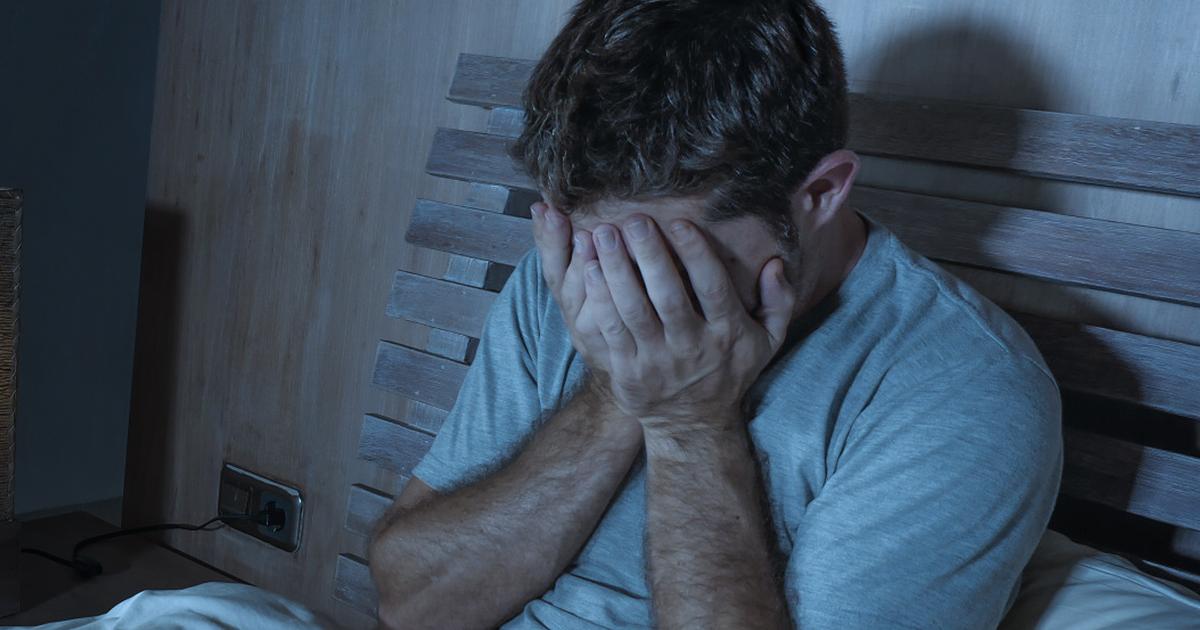Guide To The Types Of Mental Health Conditions
Mental health conditions affect individuals all over the world, and millions in the United States alone struggle with mental health issues. Though some mental illnesses have become better understood by the mainstream media, there's still a stigma regarding mental illness. There's also a general lack of understanding about how the different types of mental health issues present and affect an individual's day-to-day life. Mental illnesses are conditions with negative effects on a patient's mood, feeling, or thinking.
Every experience is unique regardless of whether two patients share a diagnosis. Treatment can help individuals recover and live the lives they want to. Seeking help is the most important step, and individuals need to be proactive about their mental health. A better understanding of the different types of mental illnesses can help individuals understand others and seek treatment when necessary.
Mood Disorders

Mood disorders are mental health conditions that cause serious emotional disruption. Ordinarily, an individual's moods and emotions change in response to external stimulation. For example, individuals might feel irritable and tired if they're under a lot of stress. At the same time, patients should experience positive feelings in response to things like happy social interaction, hobbies, and meeting goals. Certain factors can influence mood in a neurotypical individual like nutrition, sleep, and hydration. When someone has a mood disorder, though, their emotions don't match the circumstances surrounding them. The best-known mood disorder is major depression. A depressed individual doesn't experience the same pleasure in their life as a neurotypical person does, even if they try to inject positive things.
Another mood disorder is bipolar disorder, which combines depression and mania. Mania can include feelings of euphoria, agitation, paranoia, panic, and reduced impulse control. With bipolar disorder, the changes in mood come seemingly out of nowhere rather than having external triggers. Seasonal affective disorder is a type of depression that occurs in the winter months, and persistent depressive disorder is a low-grade, chronic kind of depression.
Anxiety Disorders

Occasional stress and anxiety are normal parts of life. When individuals are re feeling pressure or worried about the future, it's natural to respond with anxiety. But an anxiety disorder elevates this to another level. Anxiety disorders occur when a person has persistent, excessive, intense fears and worries regarding day-to-day life. There are many different kinds of anxiety disorders, some of which only show symptoms in specific circumstances. An anxiety disorder causes panic and fear that interferes with daily functioning. Affected individuals might avoid certain situations and experiences out of fear, and they might also have trouble enjoying life because they're so consumed by stress and panic.
Several anxiety disorders manifest with panic attacks. These are brief periods of intense fear that cause similar sensations to a heart attack, but they don't tend to last longer than ten minutes. Generalized anxiety disorder involves a generally heightened sense of anxiety and catastrophe about all aspects of life. Social anxiety disorders are related to fear of social situations. Debilitating phobias are classified as anxiety disorders. Obsessive-compulsive disorder is also an anxiety disorder that causes panic when an individual doesn't follow through on their compulsions.
Psychotic Disorders

Psychotic disorders are mental health issues that affect a patient's cognition and perception of the world. Different disorders present with different symptoms. Though many villains in mainstream media experience psychosis, actual psychotic individuals are much more likely to be victims of violent crime than perpetrators. In fact, psychotic individuals do not have a rate of violent action any higher than the general population. An individual with a psychotic disorder may struggle to think rationally and make judgments based on logic. They may believe things that aren't true and have inappropriate emotional responses to things. Communication can sometimes be difficult as well.
Psychotic disorders can cause severe symptoms that make day-to-day function difficult. However, the majority of these illnesses can be treated through a combination of medication and therapy. Schizophrenia is one of the best-known and most misunderstood psychotic disorders. It includes hallucinations and delusions, along with internal symptoms like distorted thought patterns. Schizoaffective disorder combines schizophrenia symptoms with a mood disorder.
Eating Disorders

Eating disorders are mental health conditions that present with disturbances in an individual's eating behaviors, thoughts about eating, and emotions about eating. The hallmark symptoms of eating disorders involve a preoccupation with food and body weight. At any given moment, millions of individuals are dealing with eating disorders. They are most prevalent in women between twelve and thirty-five years old, but anyone can develop an eating disorder. The three main eating disorders are bulimia nervosa, anorexia nervosa, and binge eating disorder. Anorexia and bulimia often present with an obsessive sense of perfectionism, feelings of low self-worth, and self-criticism.
Patients with anorexia and bulimia may create elaborate rules and rituals regarding food to establish a sense of control over their lives. It's common for anorexic and bulimic individuals to have intense fears about weight gain and being fat, which are often combined with poor self-image. Binge eating disorder involves periods of overeating without purging. It's the most common eating disorder in the United States. The binges are often used to self-medicate feelings of low self-worth or unhappiness.
Personality Disorders

Personality disorders are slightly different from other types of mental health issues. They tend to be more difficult to treat, though medication can sometimes be helpful depending on the case. With personality disorders, counseling and therapy are a much more integral part of treatment than medication. An individual's personality is the set of characteristics that set them apart from others, and it includes behaviors, feelings, and thoughts.
Personality disorders are patterns of behavior, emotion, and thought that last for long periods, cause mental distress or issues with functioning, and deviate from cultural expectations. There are ten types of personality disorder currently outlined in the DSM-V. A personality disorder must affect at least two of these: a person's way of viewing themselves and others, their emotional responses, their relationships with others, and their ability to control their behavior.
